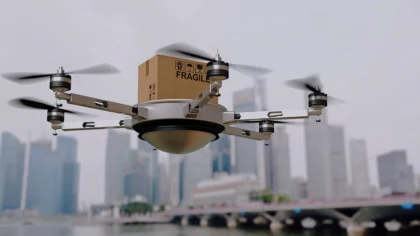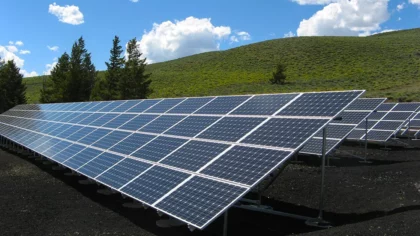Accelerate Productivity in 2025
Reignite Growth Despite the Global Slowdown
Tech-driven disaster management and risk reduction (DRR) strengthens prevention, preparedness, response, mitigation, and recovery measures. In 2022 and onwards, governments and emergency services are increasingly utilizing advanced robotics and artificial intelligence (AI) for automating disaster prevention and response. Similarly, big data and cloud computing are enabling real-time data analysis to improve situational awareness. This report provides an overview of emergency management trends ranging from geospatial intelligence and the internet of things (IoT) to drones and blockchain. They facilitate inclusive and secure disaster management and advance UN sustainable development goals (SDGs).
Innovation Map outlines the Top 10 Emergency Management Trends & 20 Promising Startups
For this in-depth research on the Top Emergency Management Trends & Startups, we analyzed a sample of 1 837 global startups and scaleups. The result of this research is data-driven innovation intelligence that improves strategic decision-making by giving you an overview of emerging technologies & startups in the emergency service industry. These insights are derived by working with our Big Data & Artificial Intelligence-powered StartUs Insights Discovery Platform, covering 2 500 000+ startups & scaleups globally. As the world’s largest resource for data on emerging companies, the SaaS platform enables you to identify relevant startups, emerging technologies & future industry trends quickly & exhaustively.
In the Innovation Map below, you get an overview of the Top 10 Emergency Management Trends & Innovations that impact 1 837 companies worldwide. Moreover, the Emergency Management Innovation Map reveals 20 hand-picked startups, all working on emerging technologies that advance their field.
Top 10 Emergency Management Trends
- Artificial Intelligence
- Geospatial Intelligence
- Emergency Communication Systems
- Internet of Things
- Big Data & Analytics
- Advanced Robotics
- Immersive Technologies
- Drones
- Cloud Computing
- Blockchain
Tree Map reveals the Impact of the Top 10 Emergency Management Trends
Based on the Emergency Management Innovation Map, the Tree Map below illustrates the impact of the Top 10 Emergency Management Trends in 2023. AI and machine learning power early warning systems as well as aids crisis and damage forecasting. Earth observation (EO) and remote sensing technologies provide location-specific information to improve protective measures. At the same time, social media remains a critical communication tool during hazards and for spreading awareness among people. IoT sensors enable real-time data collection and relaying while big data provides unified risk analysis. Further, Autonomous systems, robots, and drones execute critical infrastructure maintenance and relief operations at inaccessible locations. Augmented reality (AR)- and virtual reality (VR)-based disaster simulation prepares emergency operation centers (EOC) to respond to crises efficiently. Lastly, cloud-based and blockchain solutions ensure the speed and reliability of information shared during catastrophes.
Global Startup Heat Map covers 1 837 Emergency Management Startups & Scaleups
The Global Startup Heat Map below highlights the global distribution of the 1 837 exemplary startups & scaleups that we analyzed for this research. Created through the StartUs Insights Discovery Platform, the Heat Map reveals that the US sees the most startup activity.
Below, you get to meet 20 out of these 1 837 promising startups & scaleups as well as the solutions they develop. These 20 startups are hand-picked based on criteria such as founding year, location, funding raised, and more. Depending on your specific needs, your top picks might look entirely different.
Top 10 Emergency Management Innovation Trends in 2022
1. Artificial intelligence
AI-powered early warning systems, disaster forecasting, and risk modeling enable disaster-resilient infrastructures and communities. During emergencies, first responders and relief providers use AI tools for response management and rapid disaster surveys to assess damages. Machine learning and deep learning also provide insights based on videos and images from disaster-stricken areas, EO, and geographic information systems (GIS). This enables EOCs and disaster management authorities to optimize resource allocation, evacuation planning, and action plans. Further, startups leverage natural language processing (NLP) to develop chatbots and voice response systems to handle the high call volumes of emergency hotlines. These tools also identify distressed humans through sentiment analysis and provide cognitive engagement to reduce panic. Additionally, AI automation speeds up post-disaster recovery and reconstruction monitoring processes such as survivor identity verification, insurance claims, and financial aid delivery.
Augurisk aids Hazard Risk Assessment
US-based startup Augurisk builds a hazard risk assessment platform. It uses proprietary machine learning algorithms to predict the likelihood of natural hazards and societal risks. The platform provides risk scoring and comprehensive reports for all potential disasters in any US-based location and alerts the users. This allows individual travelers, homeowners, property buyers, and enterprises to benchmark property risks and ensures personnel safety and infrastructural security.
AUTOVOLTZ facilitates Early Fire Detection
Indian startup AUTOVOLTZ develops AVR-1 Intellitech Fire Sprinkler System, an intelligent fire safety and disaster management platform. It combines cameras, temperature sensors, and proprietary software to detect fire source, direction, and spread rate at incipient stages. Upon detecting fire, the platform activates a sprinkler pattern effective in containing fire emergencies at the source using minimal water. Moreover, the startup retrofits existing sprinkler systems to minimize fire-related losses in commercial buildings, hospitals, and government offices.
2. Geospatial Intelligence
Data from satellite navigation systems, EO, GPS, and geographic information systems (GIS) quantifies disaster risks and climate change. Geospatial intelligence directly assists in combating disasters and reduces damages and casualties by providing natural or man-made disaster alerts. To aid this, startups are building early warning systems powered by satellites, lower atmosphere remote sensing data, and volunteered geographic information (VGI). Location-specific GIS data and regional information systems also enable startups to provide localized and inclusive disaster mitigation solutions. Similarly, innovations in topography mapping and 3D scanning solutions enable the mapping of hazard zones and the development of disaster-resilient cities and communities. Further, it enables response and recovery efforts, like reconstruction and logistical support, and monitoring in the post-disaster phase.
Re:Public enables Emergency Mapping
Re:Public is a US-based startup that builds a web platform for real-time hazard information mapping and sharing. It leverages geospatial data to track and visualize community risks and analyze their impact on assets, infrastructure, and population. The platform’s decision support module tracks and maps frequent events to prioritize disaster resilience in new developments. Local governments, infrastructure project managers, and analysts use this platform to plan and track the progress of their hazard mitigation investments and planning.
WEO provides Satellite-based Monitoring
WEO is a Luxembourg-based startup that offers satellite-based environment monitoring. The startup utilizes AI-powered radar along with optical and thermal imaging sensors aboard satellites to build accurate maps of problem areas on earth. This provides insights into industrial and governmental concerns such as sustainable agriculture, climate change, water resource management, and natural disasters. Consequently, the startup aids governments and industrial establishments in building resilient cities and maintaining urban forests.
3. Emergency Communication Systems
Access to emergency services during catastrophes heavily depends on the serviceability of communication systems. Therefore, startups are offering communication tools like off-grid and infrastructure-independent voice communication systems and vehicle-ready gateways. Enhanced wireless, satellite, and 5G connectivity also ensures timely information delivery to risk populations. Additionally, social media, forums, and micro-blogging sites remain affordable mediums to promote disaster awareness and engage communities. Moreover, users provide disaster-related warnings, situational awareness, and field information by sharing photos and videos, making social media a crowd-sourced data platform. Startups are also developing information mapping tools to gather event-related information from social media. This aids sentiment analysis as well as post hoc response and preparedness. At the same time, traditional broadcasting and telecommunication services, such as SMS, are still relevant for delivering emergency messages at scale.
SOAEnterprise facilitates User Generated Emergency Data Relaying
Nigerian startup SOAEnterprise builds ALARRT, a social media app for security information exchange. It allows users to notify life-threatening emergencies or crises to their peers, news agencies, and governments through SMS, email, or other social media apps. The app features content sharing, engagement, and monetization similar to other social media apps besides providing national crisis alerts. Moreover, it connects users with the nearest emergency response units and enables swift assistance by dispatching rescue teams for the affected people.
Crisicall advances Satellite-based Emergency Communication
French startup Crisicall develops a disaster-proof communication system using nanosatellites. The startup’s antennas create a stable WiFi network for public use. Victims use it to communicate with rescue teams for medical assistance, identification, and other needs. The network automatically shares the victims’ GPS location with the rescue teams and enables efficient crisis response. This enables hotels, city administrations, and public management organizations to ensure citizen safety and security during catastrophes.
4. Internet of Things
Real-time data from disaster-prone zones and incident sites is critical in determining the best solutions to control the damages and save lives. Startups are developing IoT sensors and detectors for data acquisition, location finding, and mobility management. Smart cities and infrastructure developers use environmental sensors to detect rising water levels, strong winds, temperatures, lethal gas leakage, etc. On the other hand, emergency control rooms rely on CCTVs with enhanced fields of view to collect hazard data in public spaces. Moreover, vehicle-to-vehicle (V2V) communication and connected car solutions enable law enforcement authorities and ground teams to take timely and synchronized rescue actions. Wearables tech and diagnostics chips are among the newer IoT devices that aid disease outbreaks and public health management during epidemics.
eQuake Systems makes an Earthquake Response System
Canadian startup eQuake Systems manufactures earthquake response systems that protect critical infrastructures during earthquakes and seismic risks. The startup’s IoT device, QuakeTrip, utilizes accelerometers and integrated software that shuts down systems such as elevators, gas, water, and electricity during earthquakes. It does so by measuring 3D ground motion and automatically shuts down utility systems when these measurements exceed pre-defined thresholds. QuakeTrip is installed in residential, commercial, and industrial properties to prevent structural damages and in public utilities to activate complex shutdown sequences.
Skyfora offers Weather Sensors
Finish startup Skyfora develops IoT sensors for weather measurements. The startup launches an integrated system of weather instruments, StreamSonde, using airplanes, balloons, or drones, enabling data capturing at ascent and descent. Its lightweight sensors collect basic meteorological, vorticity, and turbulence data at low terminal velocity, thereby improving data quality and accuracy. Weather stations, emergency management professionals, atmospheric researchers, and institutions leverage this solution for precise air quality and hydrometeorological hazard monitoring.
5. Big Data & Analytics
Heterogeneous data from sources such as weather and government departments, social media, and cellphone activities generate massive datasets. Big data and analytics solutions optimize and centralize the analysis of this vast information, improving emergency management efforts. Startups are leveraging big data for disaster risk analytics and people data management. It streamlines humanitarian supply chain logistics, budget planning, procurement processes, and response team tracking. Advanced analytics also creates a unified database for coordinated operations by automating data analysis, interpretation, and reporting, saving time for decision-makers. Predictive analytics tools forecast prospective impacts of threats to manage all phases of the disaster cycle. In effect, big data and analytics solutions speed up disaster response.
Synrgai aids Disaster Prediction
Israeli startup Synrgai offers ComMuni platform, a disaster prediction solution. It combines big data and AI to accumulate and analyze data from smart city sensors and urban systems to create city data lakes (CDLs). The platform’s predictive analytics module then finds hidden patterns, anomalies, and insights from CDLs to predict disasters and support decision-making. This shortens planning processes and optimizes resource procurement and usage for corporate, federal, and municipal agencies to effectively manage crises.
CommandPost offers an Emergency Management System (EMS)
Australian startup CommandPost develops an eponymous real-time incident and emergency management system. It is a centralized cloud-based tool that streamlines reporting and coordination from a single source of information during crises. The system also features structured incident escalation, delegation, response tracking, and monitoring for response teams and involved personnel. As a result, EOCs, control rooms, ground units, and first responders use this tool to ensure human safety and minimize public life disruptions.
6. Advanced Robotics
Deploying humans for repairs, rescue, and rehabilitation during emergencies such as cyclones and nuclear disasters is lethal. To ensure their safety, startups develop robotic and autonomous systems that remove humans from high-risk jobs. Advances in robotics enable automated underwater and underground infrastructure maintenance, infrastructure monitoring, and reconstruction. This addresses the lack of skilled labor and ensures citizen safety. Robots, automated guided vehicles (AGV), and autonomous mobile robots (AMR) also empower disaster prevention and management. They enable preventive maintenance for critical infrastructures like grids and water pipelines to ensure human well-being during emergencies.
In-Pipe Robot enables Remote Pipeline Inspection
US-based startup In-Pipe Robot makes robots for remote pipeline inspection and maintenance. The startup creates pipeline digital twins using its diameter adjustable robot, providing a live, high-resolution, fisheye view of pipeline conditions. It also provides an inspection report and predictive analysis for the maintenance of aging water and wastewater pipelines. Water and wastewater companies use the startup’s robotic solution to curb maintenance costs and prevent containment loss.
Panza Robotics provides Disaster Surveillance & Monitoring Robots
Slovak startup Panza Robotics builds autonomous quadruped robots for disaster surveillance and monitoring. The robots use machine vision sensors and AI to autonomously detect dangerous objects and events as well as perform high-risk jobs. They are first responder tools for environmental and disaster monitoring, leak detections, premise disinfection, and surveillance. The startup’s robots thus allow utility companies, governments, and incident management teams by improving worker safety and disaster recovery.
7. Immersive Technologies
Immersive technologies build resilient response teams and enhance resilience return on investment (RROI). They provide disaster simulations, modeling, and performance measurement to analyze the effectiveness of action plans and response teams. Startups primarily use AR, VR, and 360-degree photographs to create virtual environments that depict emergency situations. This allows disaster management authorities and private organizations to train their teams and make foolproof contingency plans. Startups also leverage AR and 3D scanning to create city models to improve situational awareness in emergency control rooms. On-field, AR enables scan-and-trace to capture digital footprints of missing persons and locate them.
RAMROD XR advances Tactical Training
German startup RAMROD XR develops a software-as-a-service (SaaS) platform for tactical and stress inoculation training. The startup’s solution, UTAV, transforms physical facilities into difficult training scenarios through VR modules. This allows trainers to customize these scenarios and choose various training opponents like AI and humans. Special forces and first responders leverage this solution to reduce training costs associated with expensive-to-train emergency situations.
SeeWorthy accelerates Emergency Simulations
Singaporean startup SeeWorthy develops spatial computing solutions for emergency command centers. Its mixed reality emergency command solution utilizes AR headsets and IoT for tracking and overlaying critical information to onsite responders. Further, it provides tailored disaster and distress situation simulations to train a large number of people simultaneously. As a result, emergency operations centers and private organizations use SeeWorthy’s solution to reduce training costs for response teams.
8. Drones
Drones accelerate DRR and rehabilitation by facilitating aerial surveys, location and infrastructure risk profiling, and remote inspection. This ensures the timely repair of faults and anomalies to prevent malfunction during catastrophes. Likewise, emergency teams use drones for assessing sites, supplementing humans in rescue missions, and restoring logistic transport networks. Startups are developing drones that feature heavier payload capacity, smaller form factor, autonomous collision avoidance, and rerouting, among others. These further enable the response teams to improve situational awareness and rescue planning. Additionally, drones deliver necessities such as food, medical supplies, temporary communication systems, and emergency equipment to ground teams.
iHawk Global develops Firefighting Unmanned Aerial Vehicles (UAVs)
Singaporean startup iHawk Global provides firefighting UAVs. They feature a thermal camera that injects fire retardant powder by breaking glass up. The drones carry payloads up to 300 kgs and support vision-based navigation for routing, self-charging, and collision avoidance. They also perform firefighting in high-rise and densely populated areas, detect defects, and provide logistical support during emergencies and hazardous situations.
Ember Flash Aerospace offers Situational Awareness
US-based startup Ember Flash Aerospace makes mission-oriented, long-endurance unmanned air systems (UAS) to provide situational awareness and cellular on wings (COW). The startup’s electric UAS combines AI, imaging, 3D mapping, and sensors that enable autonomy and edge processing capabilities. During emergencies, they perform aerial inspections, topographic mapping, and dynamic target identification to alert and relay data to ground stations. The startup’s solution thus empowers first responders to remotely plan disaster rescue operations, provide communication services to victims, and save lives.
9. Cloud Computing
Loss of critical information collected through sensors, surveys, and disaster-related databases hinders mitigation, response, and recovery processes. Startups rely on cloud computing to prevent data loss and ensure real-time information processing. Apart from cloud-based web tools, smartphone applications for emergency management also utilize cloud computing for live information sharing between the public and management stakeholders in real-time. Cloud-driven digital tools for emergency management include telemedicine, symptom reporting apps, mobility pattern analysis, sensor data fusion apps, etc. Further, cloud-based servers facilitate the safe deployment of information-sharing practices in hazard-prone zones, improving transparency in operations.
Viion Solutions digitzes Evacuee Management
US-based startup Viion Solutions builds Evacuee Tracking System, a cloud-agnostic smartphone app and web platform for victim evacuation management. It enables evacuee registration by scanning driver licenses, QR codes, or barcodes and links them to a disaster and evacuation location. The platform also offers an administration dashboard to manage incidents and shelter information as well as provides real-time analytics about the evacuees. This enables governments and disaster management agencies to track the evacuees at relief shelters.
Locus Blue facilitates Remote Supervision Data Processing
Japanese startup Locus Blue develops ScanX, a browser-based analytics and visualization platform for point cloud data processing. It utilizes machine learning, LiDAR, and laser data processing to analyze 3D scanning data generated from remote monitoring, surveys, and inspection systems. This enables lossless data compression and significantly reduces processing time for 3D data, automating data classification, cleaning, and mesh generation. Mining, forest management, and disaster management companies leverage ScanX to analyze disaster-prone zones and devise action plans for urban safety.
10. Blockchain
Blockchain-based decentralized information storage enables fraud prevention in disaster financial assistance, parametric insurance claims, and other aid distributions. It also enables solutions to curb misinformation regarding emergency situations by tracking the source of information and mitigating panic among risk populations. Startups are developing innovative solutions for survivor digital identity establishment and to ensure healthcare, financial, food, and other aid delivery for real victims. Blockchain-encoded data is immutable and therefore highly reliable, allowing emergency services to automate decision-making in high-pressure disaster situations and provide relief to strained rescuers.
Blockforce enables Critical Information Sharing
Brazilian startup Blockforce offers AmazoniAlerta, an information-sharing app which users to record visuals of amazon forest and community attacks. Users generate app alerts by uploading the type of infractions such as land invasions, illegal fires, mining, deforestation, and killings. Moreover, the app automatically timestamps, geolocates, protects, and increases the evidentiary value of this data using blockchain cryptography. It then shares relevant data with lawyers and journalists to support legal actions, thus preventing amazon destruction and protecting the rights of indigenous people.
Afya Rekod provides Disease Outbreak Management
Kenyan startup Afya Rekod provides a blockchain-based digital patient data and disease outbreak management platform. It enables patients to record, store, and access medical history and data on the blockchain while its AI suggests preventive measures. This allows patients to keep the right of ownership of their health data. The platform’s disease management modules track population health data to manage disease outbreaks such as COVID-19, HIV, and Ebola. Healthcare providers and medical experts use this tool for remote patient monitoring, epidemic tracking, and disease modeling, among others.
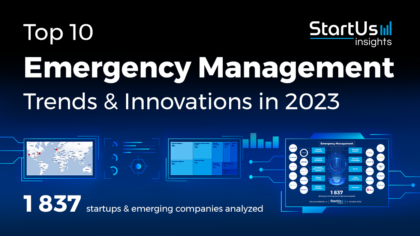
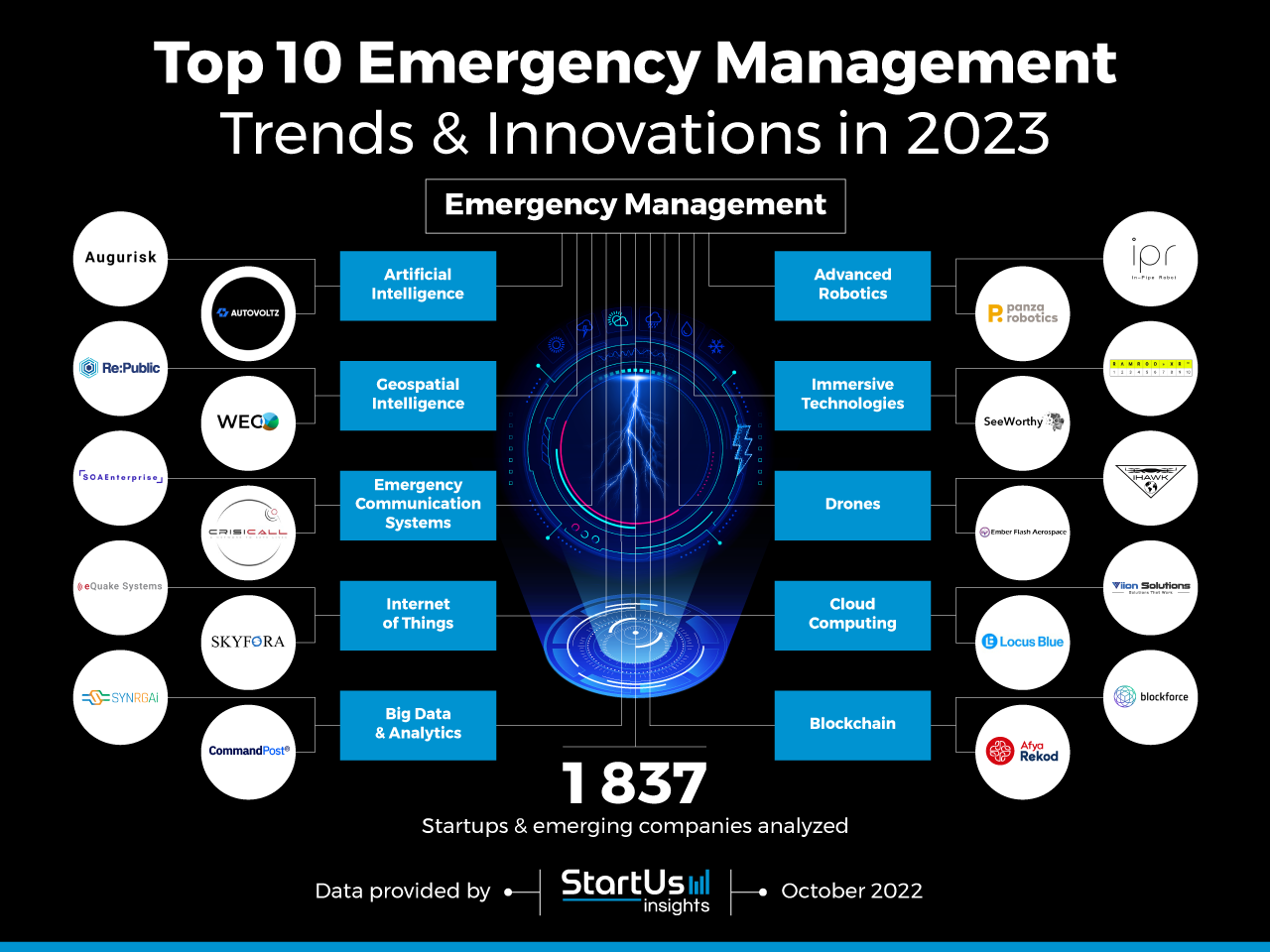
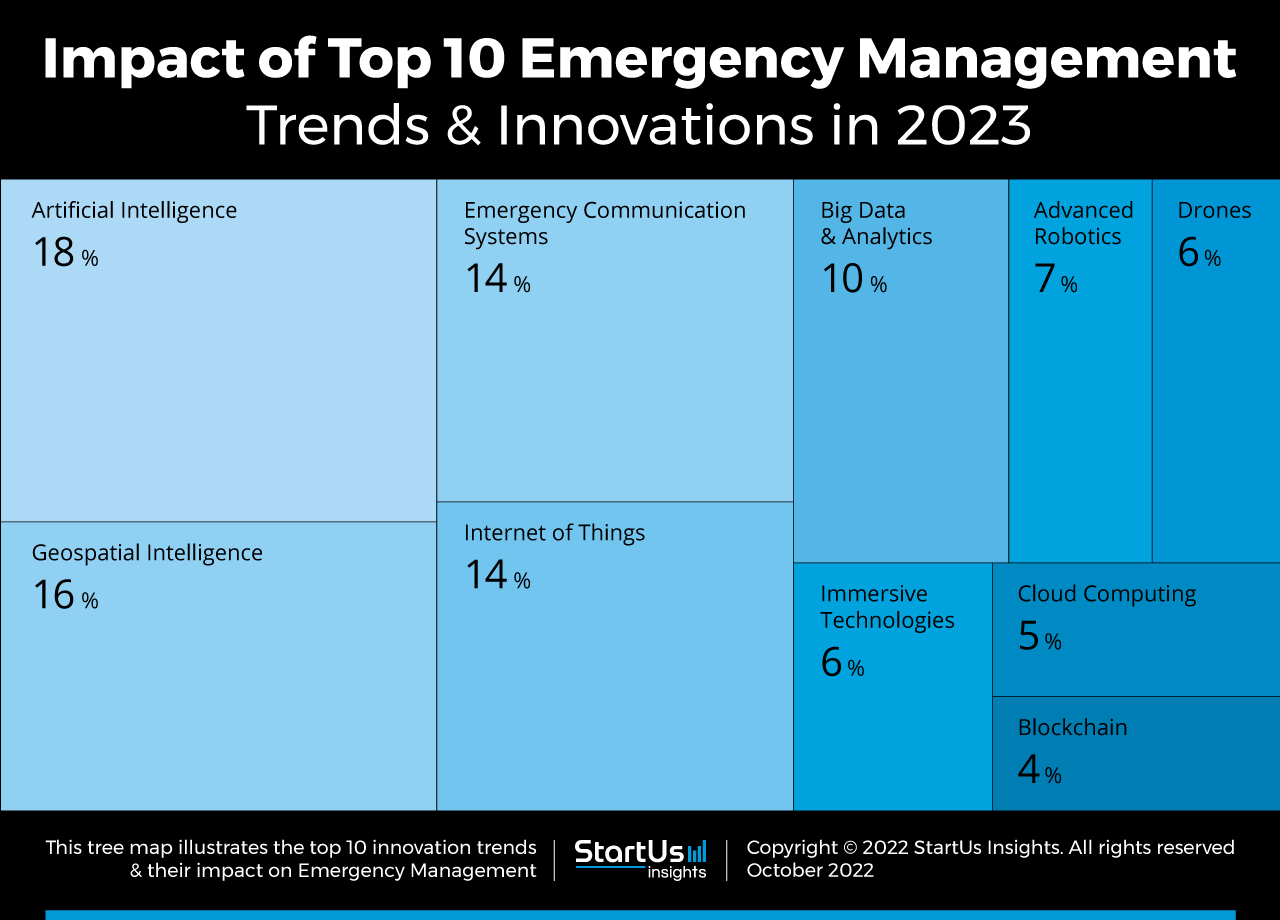
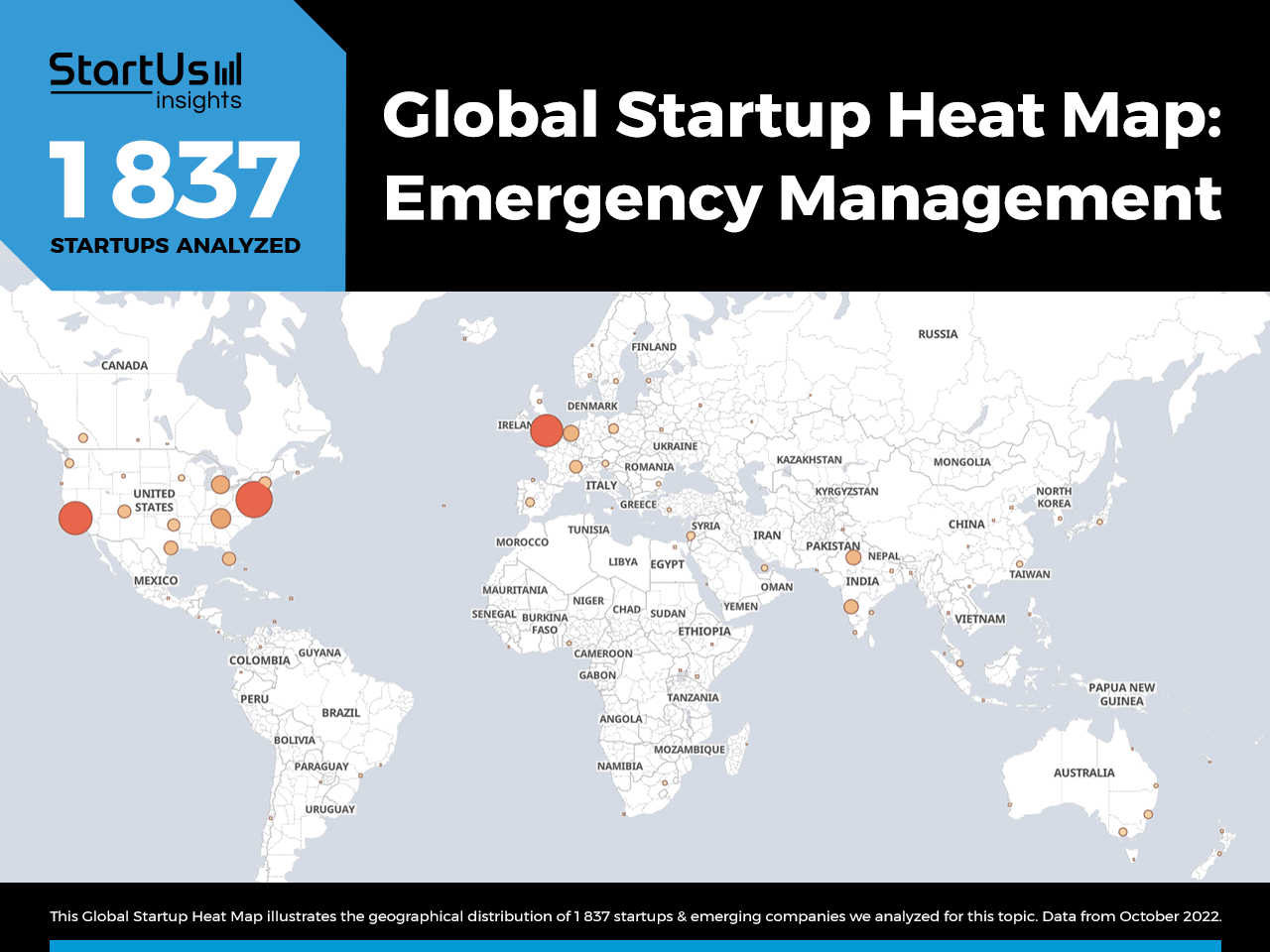
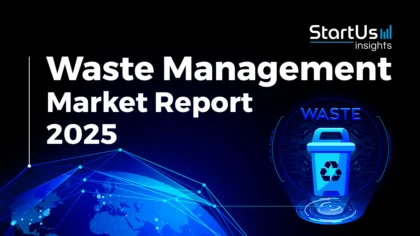
![Explore the 10 Emerging Smart City Trends [2025-2030]](https://www.startus-insights.com/wp-content/uploads/2025/06/Smart-City-Trends-SharedImg-StartUs-Insights-noresize-420x236.webp)



